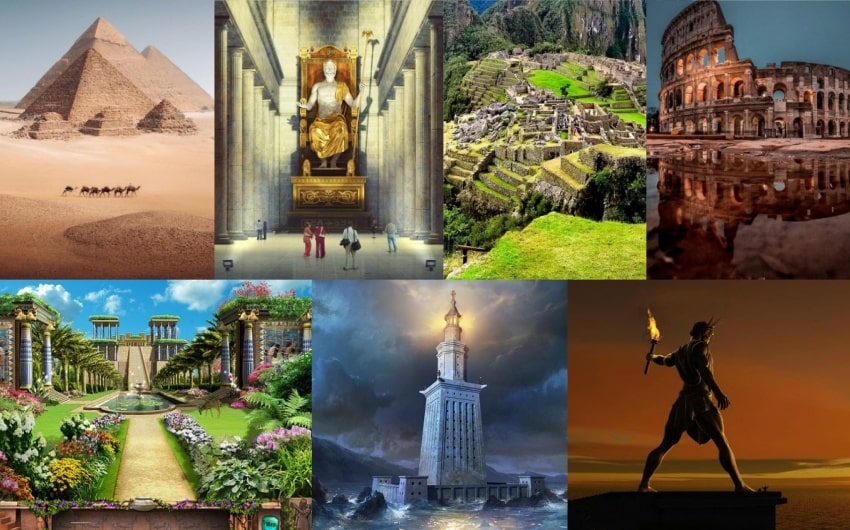A Journey Through the 7 Wonders of the World, Old vs New
The concept of the “7 wonders of the world old vs new” captivates the imagination, spanning the breadth of human history and showcasing the pinnacle of architectural and engineering achievements across civilizations.
These wonders, selected through historical documentation and modern global consensus, respectively, represent not just the zenith of artistic and construction skills of their times but also the enduring human spirit to create and commemorate. This article explores these magnificent structures, comparing the ancient marvels with their modern counterparts, to appreciate the evolution of human ingenuity and cultural significance.
The Seven Wonders of the Ancient World
1. Great Pyramid of Giza, Egypt
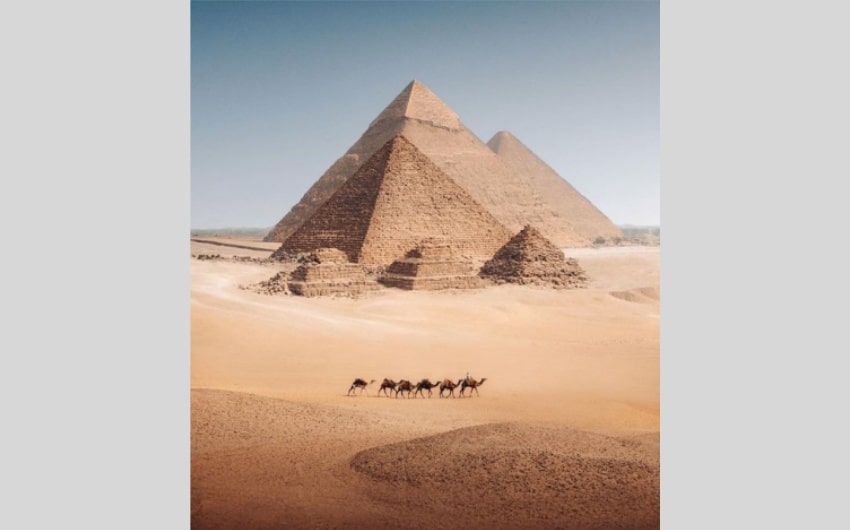
Image source: Pinterest
Constructed as a tomb for Pharaoh Khufu around 2580–2560 BC, the Great Pyramid of Giza is the oldest of the ancient wonders and the only one still in existence today.
Its construction, involving millions of limestone blocks each weighing several tons, showcases the Egyptians’ remarkable engineering skills and their mastery over complex architectural techniques.
2. Hanging Gardens of Babylon, Iraq
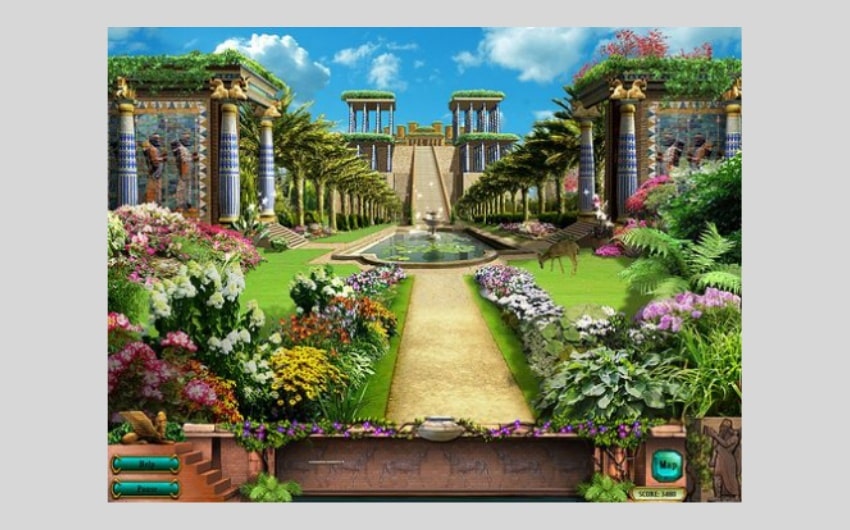
Image source: Pinterest
The Hanging Gardens, described as an astonishing feat of engineering, are said to have been built in the ancient city-state of Babylon, near present-day Hillah, Babil province, in Iraq.
According to historical accounts, the gardens were constructed by King Nebuchadnezzar II for his homesick wife, Amytis. They are thought to have featured an extraordinary series of terraced gardens, containing a wide variety of trees, shrubs, and vines, watered by an ingenious irrigation system.
3. Statue of Zeus at Olympia, Greece
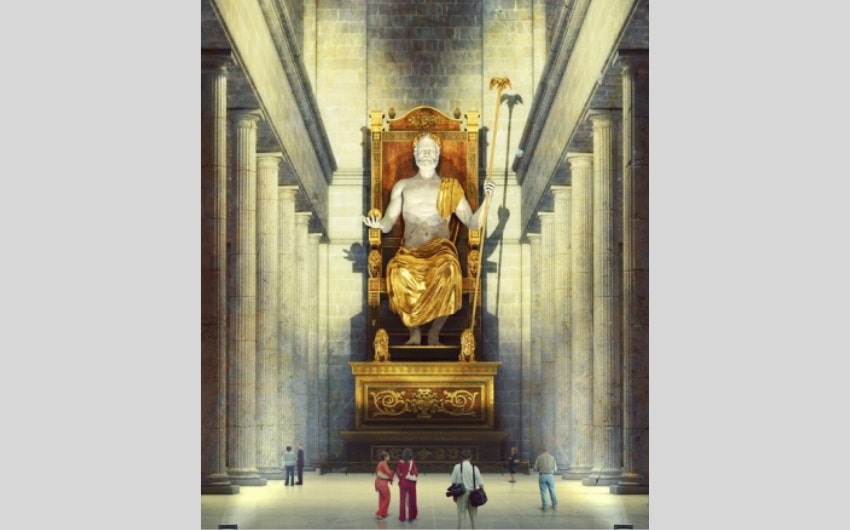
Image source: Pinterest
Crafted by the sculptor Phidias around 435 BC, the Statue of Zeus at Olympia was a giant seated figure made of ivory and gold-plated bronze.
It depicted Zeus, the father of the Olympian gods, holding a statue of Nike, the goddess of victory, in his right hand and a scepter in his left. The statue stood in the Temple of Zeus at Olympia and was celebrated throughout the ancient world for its artistry and magnificence.
4. Temple of Artemis at Ephesus, Turkey
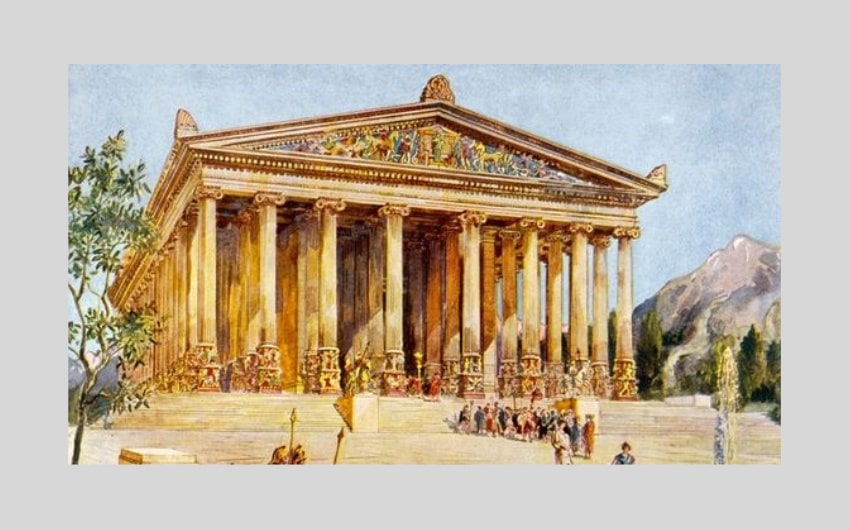
Image source: Pinterest
The Temple of Artemis, also known as the Artemision, was a grand temple dedicated to the goddess Artemis. It was rebuilt around 550 BC in Ephesus (near the modern town of Selçuk in present-day Turkey) after a previous structure was destroyed.
The temple was renowned for its breathtaking size, splendid marble work, and more than one hundred columns standing around 60 feet high. It was considered one of the greatest architectural achievements of the ancient world.
5. Mausoleum at Halicarnassus, Turkey
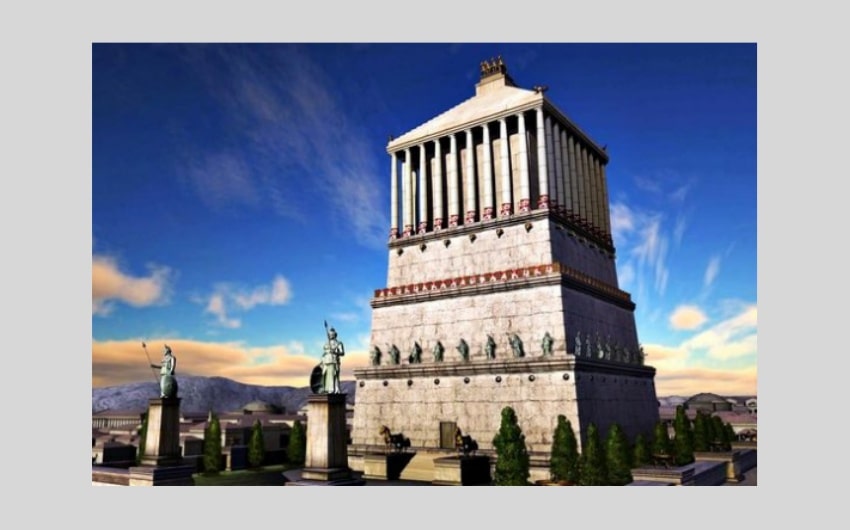
Image source: Pinterest
This tomb, built between 353 and 350 BC, was constructed for Mausolus, a satrap in the Persian Empire, and Artemisia II of Caria, his wife and sister.
The Mausoleum at Halicarnassus was approximately 45 meters in height and adorned with sculptural reliefs created by four famous Greek sculptors. Its design combined elements of Greek, Egyptian, and Lycian architecture and stood as a testament to the artistic and architectural achievements of its time.
6. Colossus of Rhodes, Greece

Image source: Pinterest
The Colossus of Rhodes was a giant statue of the sun god Helios, erected on the island of Rhodes by Chares of Lindos in 280 BC to celebrate Rhodes’ victory over the ruler of Cyprus. The statue stood over 30 meters high, making it one of the tallest statues of the ancient world.
Although it was destroyed by an earthquake in 226 BC, the Colossus remains a symbol of Greek art and engineering prowess.
7. Lighthouse of Alexandria, Egypt

Image source: Pinterest
Constructed around 280 BC on the island of Pharos in Alexandria, the Lighthouse of Alexandria, also known as the Pharos of Alexandria, served as a landmark and beacon for mariners navigating into the busy harbor of Alexandria, one of the greatest cities of the ancient world.
It is estimated to have been at least 100 meters in height, making it one of the tallest man-made structures in the world for many centuries. The lighthouse’s innovative design and use of light reflection and amplification techniques underscored the advanced technological understanding of the time.
The New Seven Wonders of the World
1. Great Wall of China, China

Image source: Pinterest
Spanning thousands of miles across northern China, the Great Wall was built to protect Chinese states and empires against the raids and invasions of various nomadic groups.
Its construction started as early as the 7th century BC, with major building activities happening during the Ming dynasty (1368–1644). The wall is a testament to Chinese military architecture, innovation, and endurance, with its vast stretch winding over rugged mountains and through desolate deserts.
2. Petra, Jordan
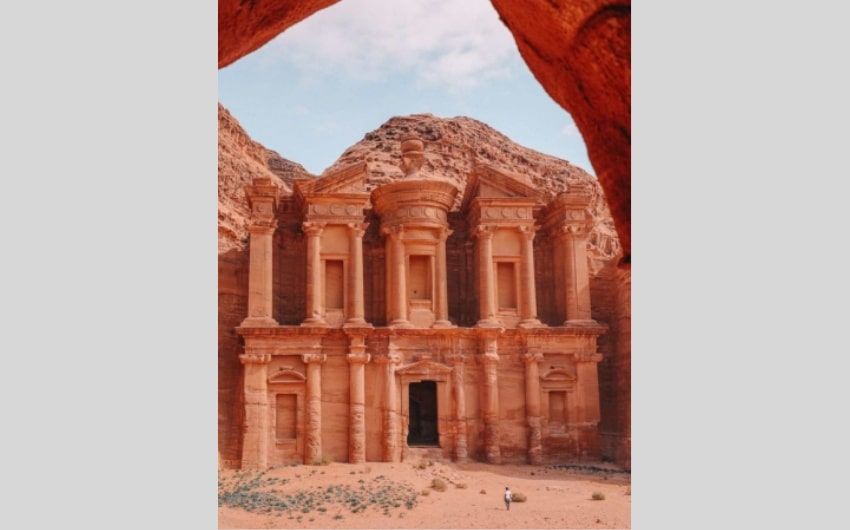
Image source: Pinterest
Carved directly into vibrant red sandstone, Petra is an archaeological site that was the capital city of the Nabataean Kingdom around the 6th century BC. Known as the “Rose City” for the color of the stone from which it is carved, Petra is famous for its rock-cut architecture and water conduit system.
Its most iconic structure, the Treasury (Al-Khazneh), epitomizes the engineering genius and aesthetic sophistication of the Nabataeans.
3. Christ the Redeemer, Brazil
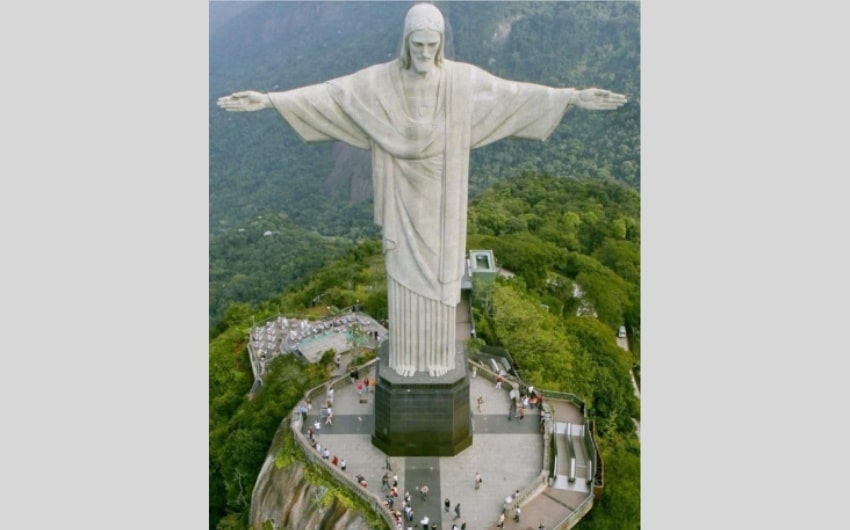
Image source: Pinterest
This colossal statue of Jesus Christ in Rio de Janeiro, Brazil, stands 30 meters tall, not including its 8-meter pedestal, and its arms stretch 28 meters wide. Designed by Brazilian engineer Heitor da Silva Costa and created by French sculptor Paul Landowski, it was completed in 1931 and symbolizes peace and redemption.
Overlooking the city from the summit of Mount Corcovado, it has become an emblem of Brazilian Christianity and a welcoming gesture to visitors.
4. Machu Picchu, Peru

Image source: Pinterest
Machu Picchu is an Incan city set high in the Andes Mountains in Peru, above the Urubamba River valley.
Built in the 15th century and later abandoned, it’s renowned for its sophisticated dry-stone construction that fuses huge blocks without the use of mortar, intriguing buildings that play on astronomical alignments, and panoramic views. Its exact former use remains a mystery, which adds to the allure of this UNESCO World Heritage Site.
5. Chichen Itza, Mexico
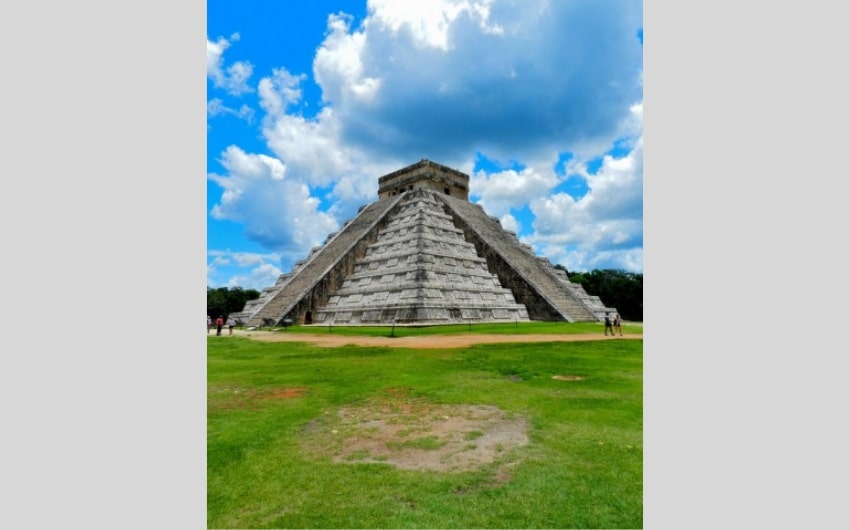
Image source: Pinterest
Chichen Itza is a large pre-Columbian archaeological site built by the Maya people of the Terminal Classic period. Located in the Yucatan Peninsula of Mexico, this site showcases a variety of architectural styles, indicative of the diverse population that once inhabited the city.
The Pyramid of Kukulkan, also known as El Castillo, is particularly famous for the phenomenon that occurs during the equinoxes when the shadow of a serpent descends the pyramid’s steps.
6. Roman Colosseum, Italy
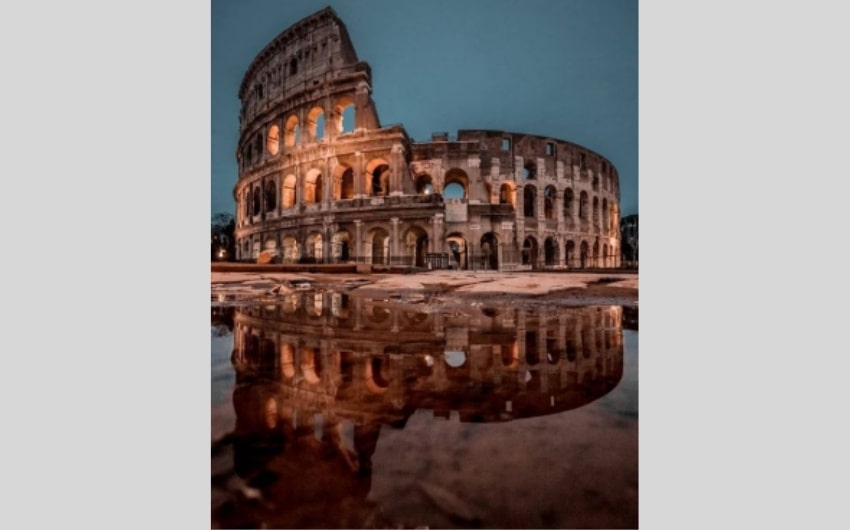
Image source: Pinterest
The Colosseum, also known as the Flavian Amphitheatre, is an oval amphitheatre in the center of Rome, Italy. Built of concrete and sand under the Flavian emperors in the 1st century AD, it is the largest amphitheatre ever built and could hold between 50,000 and 80,000 spectators.
This iconic symbol of Imperial Rome was used for gladiatorial contests and public spectacles such as mock sea battles, animal hunts, executions, and dramas.
7. Taj Mahal, India

Image source: Pinterest
Located in Agra, Uttar Pradesh, India, the Taj Mahal was commissioned in 1632 by the Mughal emperor Shah Jahan to house the tomb of his favorite wife, Mumtaz Mahal.
This ivory-white marble mausoleum is an epitome of Mughal architecture, combining elements from Islamic, Persian, Ottoman Turkish, and Indian architectural styles. The Taj Mahal is admired universally as a symbol of love and a masterpiece of art and engineering.
Comparison and Reflection

Image source: Pinterest
The transition from the ancient to the new Seven Wonders of the World represents not only a journey through time but also an evolution in human capabilities, cultural values, and technological advancements.
By comparing these wonders, we can gain insight into the changing dynamics of civilization, the progression of engineering and architectural techniques, and the enduring human desire to create and commemorate.
1. Architectural and Engineering Evolution
The ancient wonders, with the exception of the Great Pyramid of Giza, no longer stand, yet they laid the foundation for future architectural and engineering marvels. The ancient wonders were largely constructed with materials and techniques that were revolutionary for their time but limited by the technology available.
In contrast, the new wonders, such as the Great Wall of China and the Taj Mahal, showcase advanced engineering techniques, including the use of mortar, metal clamps, and sophisticated structural principles that have allowed these marvels to withstand the test of time.
2. Cultural Significance and Purpose
The ancient wonders were predominantly built to honor gods or serve as tombs for monarchs, reflecting the deeply religious and hierarchical nature of the societies that constructed them. The new wonders, while still bearing significant cultural and historical importance, often embody broader themes such as unity, peace, and the celebration of human achievement.
For instance, Christ the Redeemer represents a symbol of peace and Brazilian Christianity, while the Roman Colosseum reflects the social and political life of Imperial Rome.
3. Materials and Construction
The materials used in the construction of the wonders have also evolved. Ancient wonders were constructed using locally sourced materials such as limestone, marble, and bronze. The new wonders, however, utilized a wider range of materials, including concrete and steel, allowing for greater durability and the ability to construct on a much larger scale.
4. Technological Advancements
The construction of the new wonders was facilitated by significant technological advancements, including modern construction equipment, computer-ai&ded design (CAD) software, and advanced materials science.
These technologies have enabled more precise and efficient construction processes, allowing for the creation of structures that would have been impossible to build in ancient times.
5. Global Influence and Connectivity
The selection of the new wonders through a global voting process reflects the interconnectedness of the modern world. Unlike the ancient wonders, which were concentrated around the Mediterranean and Middle Eastern regions, the new wonders are spread across four continents, showcasing the diversity and cultural richness of civilizations around the globe.
6. Reflection on Human Ingenuity
Both the ancient and new wonders of the world are testaments to human ingenuity, creativity, and perseverance.
They reflect the universal desire to push the boundaries of what is possible, whether in honor of the divine, to commemorate the dead, to celebrate culture, or to showcase national pride. These wonders remind us of our shared heritage and the timeless human quest to leave a lasting legacy on the Earth.
In essence, the comparison between the ancient and new wonders of the world offers a mirror to humanity’s past, present, and future, revealing the evolution of our societies, technologies, and aspirations. It underscores the importance of preserving these marvels for future generations, as they serve as beacons of human achievement and symbols of our collective memory.
Conclusion
The “7 wonders of the world old vs new” serve as beacons of our collective heritage, inspiring awe and respect for past and present civilizations. They remind us of our shared history and the continuous journey of human creativity and perseverance. As we marvel at these wonders, we’re reminded of the importance of preserving and cherishing these symbols for future generations, ensuring that the legacy of human ingenuity endures through the ages.

